Forestry & Environmental Management
Master of Science in Forestry Thesis Defense | Jesse Moura dos Santos
Ed Czerwinski
Posted: April 6, 2022 12:00:00 AM ADT

APPLICATION OF A DENDROECOLOGY APPROACH TO RED SPRUCE (PICEA RUBENS) PROVENANCE TRIALS TO STUDY SPECIES AND POPULATION VULNERABILITY TO CLIMATE CHANGE Date: April 20 – 10:00 amLocation: FG Room 202 and MSTeams Abstract: Red spruce (Picea rubens) is a tree species unique to the Acadian Forest, providing numerous ecosystem goods and services, including timber for the forest industry. With the expected decline of the species climate change, assisted migration of more southern, warm-adapted...
Master of Science in Forestry Thesis Defense | Clara Schortemeyer
Ed Czerwinski
Posted: April 5, 2022 12:00:00 AM ADT

Master of Science in Forestry - Thesis Defense - Clara Schortemeyer MAXIMIZING WHITE SPRUCE (PICEA GLAUCA) PRODUCTIVITY IN A DRYING CLIMATE THROUGH TREE IMPROVEMENT Date: April 20 – 1:00 pm Location: FG Room 202 and MSTeams Abstract: In this thesis, I quantified the genetic variation and drought response of three, 20-year-old white spruce (Picea glauca) varietal test sites in New Brunswick, Canada. The objectives were: 1) to test if volume breeding values could be used to predict...
Forest management impacts on stream integrity at varying intensities and spatial scales: Do biological effects accumulate spatially?
Erdozain M., Kidd K.A., Emilson E.J.S., Capell S.S., Luu T., Kreutzweiser D.P., Gray M.A.
Posted: April 8, 2021 12:00:00 AM ADT
Category: Publications , Research
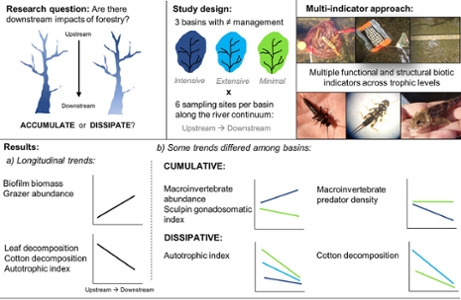
Abstract: The effects of forest harvesting on headwaters are quite well understood, yet our understanding of whether impacts accumulate or dissipate downstream is limited. To address this, we investigated whether several biotic indicators changed from smaller to larger downstream sites (n = 6) within three basins that had intensive, extensive or minimal forest management in New Brunswick (Canada). Biofilm biomass and grazer abundance significantly increased from upstream to downstream,...
Object and behavior differentiation for improved automated counts of migrating river fish using imaging sonar data
Helminen J., Linnansaari T.
Posted: April 8, 2021 12:00:00 AM ADT
Category: Publications , Research

Abstract: Imaging sonars, such as the Adaptive Resolution Imaging Sonar (ARIS; Sound Metrics Corp.) produce continuous stream of sonar video footage, and they are commonly used for counting and sizing migrating fish in rivers. Although automated methods have been developed for processing imaging sonar data, manual analysis of the data is still common in fish population monitoring projects. In this study, we used Echoview software to automatically produce fish counts from long-range (up to 30...
Spruce budworm tree host species distribution and abundance mapping using multi-temporal Sentinel-1 and Sentinel-2 satellite imagery
Bhattarai R., Rahimzadeh-Bajgiran P., Weiskittel A., Meneghini A., MacLean D.A.
Posted: March 26, 2021 12:00:00 AM ADT
Category: Publications , Research
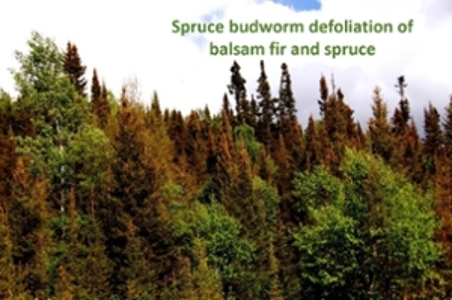
Abstract: Spruce budworm (Choristoneura fumiferana; SBW) is the most destructive forest pest of northeastern Canada and United States. SBW occurrence as well as the extent and severity of its damage are highly dependent on the characteristics of the forests and the availability of host species namely, spruce (Picea sp.) and balsam fir (Abies balsamea (L.) Mill.). Remote sensing satellite imagery represents a valuable data source for seamless regional-scale mapping of forest composition. This...
Evaluating annual spruce budworm defoliation using change detection of vegetation indices calculated from satellite hyperspectral imagery
Donovan S.D., MacLean D.A., Zhang Y., Lavigne M.B., Kershaw J.A.
Posted: March 23, 2021 12:00:00 AM ADT
Category: Publications , Research

Abstract: During spruce budworm (SBW; Choristoneura fumiferana (Clem.)) outbreaks, defoliation causes severe tree damage and mortality to spruce-balsam fir (Picea spp.-Abies balsamea (L.) Mill.) forests. Annual defoliation thematic maps provide vital information for forest protection planning against outbreaks, but such data are challenging to accurately collect over large areas during a short (2–3 week) period when damaged foliage peaks. Current operational methods for estimating...
Interannual variation in sap flow response in three xeric shrub species to periodic drought
Sundas Iqbal, TIanshan Zha, Xin Jia, Muhammad Hayat, Duo Qian, Charles P. A. Bourque, Yun Tian, Yujie Bai, Peng Liu, Ruizhi Yang, Alamgir Khan
Posted: March 15, 2021 12:00:00 AM ADT
Category: Publications , Research
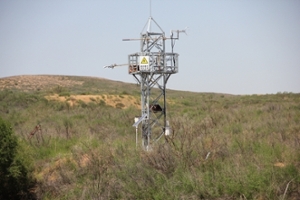
Abstract: Extreme seasonal droughts frequently occur in semiarid and arid areas of the world. They can exert a profound influence on the physiological state of desert plants. Short-term rainfall and long-term water shortages in the Mu Us Desert have differentiated the role of individual species with their distinct ability to resist and recover from drought. This study explores how the scale of rainfall events affects interannual variation in sap flow in three dominant desert-shrub species...
Forest management impacts on stream integrity at varying intensities and spatial scales: Do abiotic effects accumulate spatially?
Erdozain M., Kidd K.A., Emilson E.J.S., Capell S.S., Kreutzweiser D.P., Gray M.A.
Posted: March 12, 2021 12:00:00 AM AST
Category: Research , Publications
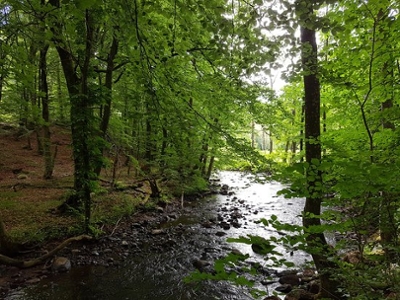
Abstract: Though effects of forest harvesting on small streams are well documented, little is known about the cumulative effects in downstream systems. The hierarchical nature and longitudinal connectivity of river networks make them fundamentally cumulative, but lateral and vertical connectivity and instream processes can dissipate the downstream transport of water and materials. To elucidate such effects, we investigated how a suite of abiotic indicators changed from small streams to larger...
High risk of growth cessation of planted larch under extreme drought.
Zhang X., Li X., Manzanedo R.D., D'Orangeville L., Lv P., Wang C., Xu C., Hou M., Huang X., Rademacher T.
Posted: March 10, 2021 12:00:00 AM AST
Category: Research , Publications
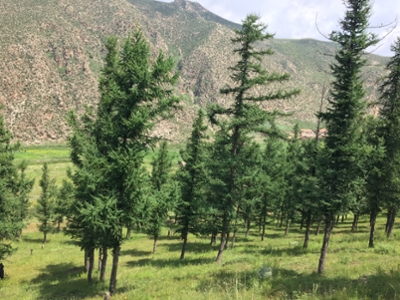
Abstract: Larch trees are widely used in afforestation and timber plantations. Yet, little is known on how planted larch trees cope with increasing drought. We used a tree-ring network of 818 trees from 31 plantations spanning most of the distribution of Larix principis-rupprechtii to investigate how extreme drought influences larch radial growth in northern China. We found that summer drought, rather than temperature or precipitation, had the strongest relationship with radial growth...
Comparison between three registration methods in the case of non-georeferenced close range of multispectral images.
Fernández C. I., Haddadi, A., Leblon, B., Wang, J., Wang, K.
Posted: March 9, 2021 12:00:00 AM AST
Category: Publications , Research
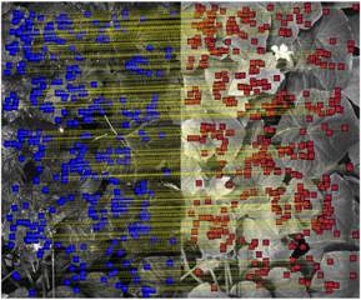
Abstract: Cucumber powdery mildew, which is caused by Podosphaera xanthii, is a major disease that has a significant economic impact in cucumber greenhouse production. It is necessary to develop a non-invasive fast detection system for that disease. Such a system will use multispectral imagery acquired at a close range with a camera attached to a mobile cart’s mechanic extension. This study evaluated three image registration methods applied to non-georeferenced multispectral images...
Acadian Forest Modelling Tool
Chris Morris
Posted: September 30, 2019 12:00:00 AM ADT
Category: Research

A new software program to model the Acadian Forest, developed by New Brunswick researcher Dr. Chris Hennigar, soon may be able to tell as much about the future of our forests as it does about the historic growth rates of trees. Hennigar, an honorary research associate with the Faculty of Forestry and Environmental Management at the University of New Brunswick, and a provincial forester and biometrician, developed the Acadian Forest calibrated variant of the Open Stand Model software in...
Ghost moose concern NB scientists
Christine Morris
Posted: September 30, 2019 12:00:00 AM ADT
Category: Research

The presence of “ghost moose” haunting the woodlands of northeastern North America has raised concern about the future of the iconic animal, including in southern New Brunswick where there has been a noticeable decline in population. Dr. Joe Nocera, assistant professor of wildlife management with UNB’s Faculty of Forestry and Environmental Management, is leading the New Brunswick portion of a joint study with Quebec that will look into populations of the large ungulates and...
Big picture on budworm interventions
AFRC
Posted: June 28, 2019 12:00:00 AM ADT
Category: Research

AFRC researchers are studying infestation cycles, natural enemies, and the climate and environmental impact of the spruce budworm to paint the whole picture of how this species interacts with our environment. Research to understand the whole story around the spruce budworm The spruce budworm early intervention strategy is about much more than monitoring and suppressing insect populations - it is also fostering critical research to aid in the long-term understanding of infestation cycles,...
Climate change and NB forests
AFRC
Posted: June 28, 2019 12:00:00 AM ADT
Category: Research

With approximately 83 per cent of its land covered by forests, few provinces are as vulnerable as New Brunswick to the effects of global warming and the changes it is expected to produce in terms of tree species, growth and productivity. Funded by Natural Resources Canada under its climate change adaptation program, the $300,000 project is being led by Dr. Van Lantz, dean of the Faculty of Forestry and Environmental Management at the University of New Brunswick. Five other scientists are...
Wet Areas Mapping (WAM) Technology
Dr. Paul Arp
Posted: May 27, 2019 12:00:00 AM ADT
Category: Research

People in the Maritime provinces are well-acquainted with the periodic flooding and other natural phenomena associated with a variable climate, from spring freshets to the occasional hurricane. With such grave threats posed to our ecosystems and communities, what measures are in place that allow for the planning and understanding of water and soils? Soil maps that capture physical and chemical variations across the landscape in sufficient detail to inform operations do not exist. Our...
